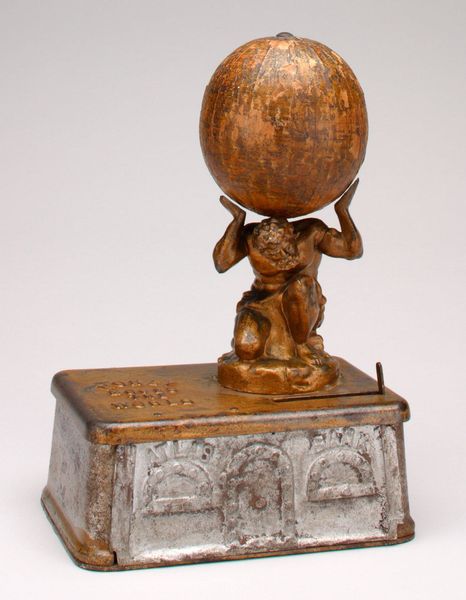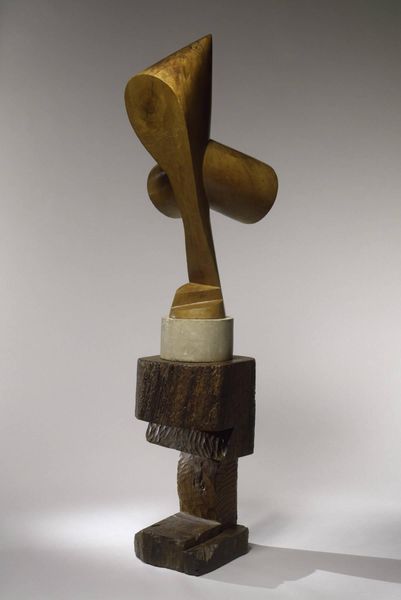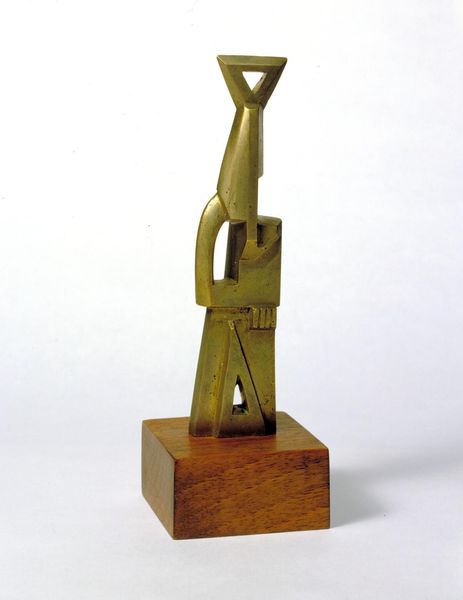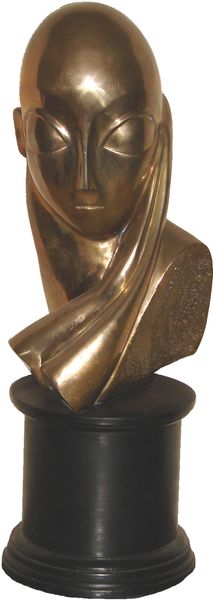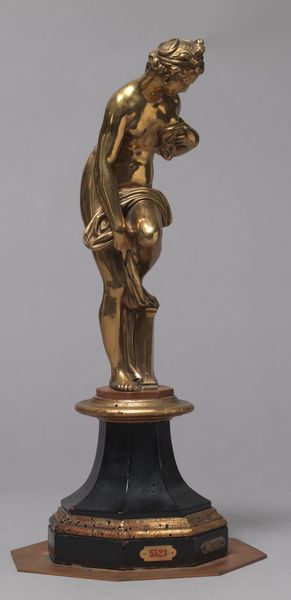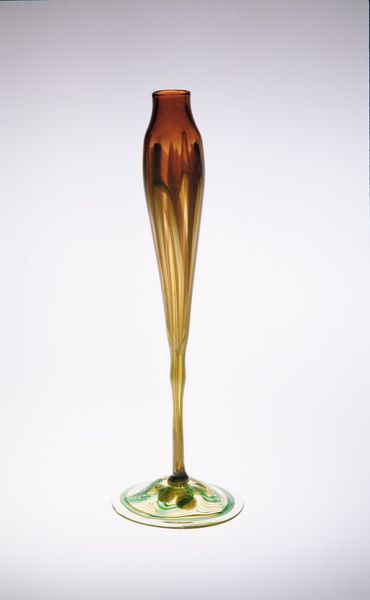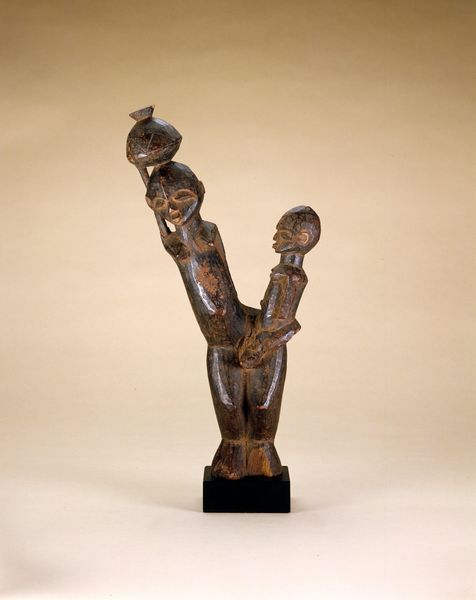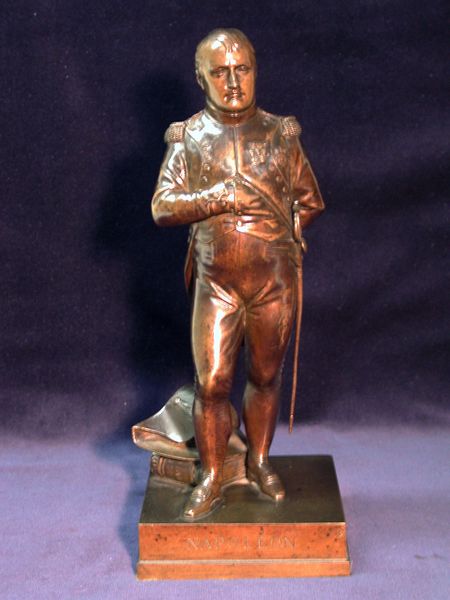
bronze, sculpture, wood
#
sculpture
#
bronze
#
geometric
#
sculpture
#
abstraction
#
symbolism
#
wood
#
modernism
Dimensions: overall (sculpture): 55.9 × 18.9 × 18.7 cm (22 × 7 7/16 × 7 3/8 in.) overall (rectangular marble base): 20.32 × 13.97 × 16.51 cm (8 × 5 1/2 × 6 1/2 in.)
Copyright: National Gallery of Art: CC0 1.0
Editor: So, here we have Constantin Brâncuși's "Maiastra" from around 1911, made of bronze, stone, and wood. It's quite striking, a sort of elongated bird form. What can you tell me about it? Curator: Brâncuși's radical simplification here highlights the materiality of the sculpture itself, wouldn’t you say? The polished bronze versus the roughly hewn wooden base presents a dialogue on value and labour. It makes us consider, where does the "art" reside? Editor: That’s interesting. I hadn’t thought about the inherent value of each material. How does that relate to the social context? Curator: Well, consider the time. Early 20th century. Mass production is booming, yet Brâncuși elevates craft. He is intentionally showing the work, and thus, labour, required to produce each component. Bronze, a traditionally 'high art' material contrasts sharply with the wood, hinting at folk art traditions. How were those materials acquired? By whom? Who profited from their sale or display? Editor: So it’s about more than just aesthetics, it’s about the entire system that allows the art to exist. The raw materials and the making process itself. The consumption too, perhaps? Curator: Precisely! It’s challenging the established hierarchy. Look at that base – the carving appears quite raw. Was this intentional? A conscious act? Consider, does this work reinforce or challenge the divide between skilled 'art' and less-skilled labor? Editor: I see what you mean. It really forces you to think about the physical work and the socioeconomic structure behind the art object. Curator: Right. We can almost read it as a commentary on the shift from individual artisanship to industrial modes of production, reflected in the very stuff that it’s made of. Editor: This piece reveals that a materialist lens challenges assumptions about art's creation and place within a much broader socio-economic context. Curator: Exactly. Thinking about it that way opens up a richer appreciation of the sculpture.
Comments
No comments
Be the first to comment and join the conversation on the ultimate creative platform.


